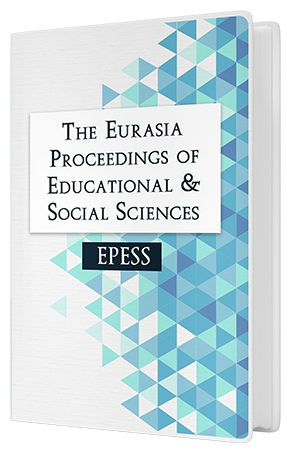The Effect of Digital Story-Supported Science Practices on the Scientific Attitudes of 7th-Grade Students
DOI:
https://doi.org/10.55549/epess.1040437Keywords:
Digital storytelling, Scientific attitude, Science applications courseAbstract
This study aims to examine the effect of supporting science applications courses with digital stories on the scientific attitudes of 7th-grade students. In this study, a quasi-experimental design was used. The study was carried out in the 2020-2021 academic year, during the 7th-grade Science Applications course of a state secondary school affiliated to the Eskisehir Provincial Directorate of National Education. The study sample consisted of 93 students from four branches, 53 male and 40 female, taking the Science Applications course. The lessons were supported by digital stories in the experimental group during the implementation process, whereas the control group followed the current curriculum. The data collection process was completed in six weeks. The scientific attitude scale was applied in the first week of this six-week process as the pre-test. 12 digital stories were used in the second, third, fourth, and fifth weeks. The scientific attitude scale was applied in the last week again as the post-test. Descriptive statistics and t-test for dependent and independent groups were used to analyze the quantitative data obtained from the Scientific Attitude Scale. A significant difference was found between the pre-test and post-test mean scores of experimental and control group students regarding their scientific attitudes, the pre-test-post-test related to the scientific attitudes of control group students, and the pre-test-post-test mean scores of experimental group students' scientific attitudes. As a result of the statistical analysis, it was concluded that digital storytelling positively improved students' scientific attitudes in the applied group.Downloads
Published
How to Cite
Issue
Section
License
Copyright (c) 2021 The Eurasia Proceedings of Educational and Social Sciences

This work is licensed under a Creative Commons Attribution-NonCommercial-ShareAlike 4.0 International License.
The articles may be used for research, teaching, and private study purposes. Any substantial or systematic reproduction, redistribution, reselling, loan, sub-licensing, systematic supply, or distribution in any form to anyone is expressly forbidden. Authors alone are responsible for the contents of their articles. The journal owns the copyright of the articles. The publisher shall not be liable for any loss, actions, claims, proceedings, demand, or costs or damages whatsoever or howsoever caused arising directly or indirectly in connection with or arising out of the use of the research material. All authors are requested to disclose any actual or potential conflict of interest including any financial, personal or other relationships with other people or organizations regarding the submitted work.




